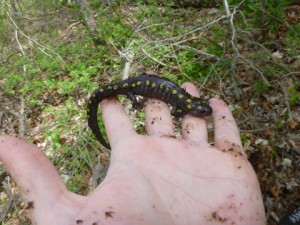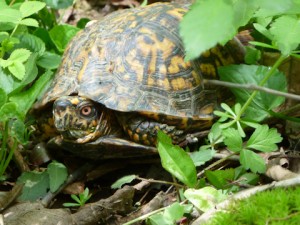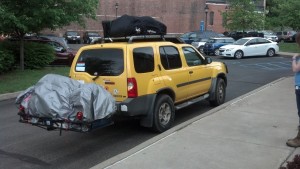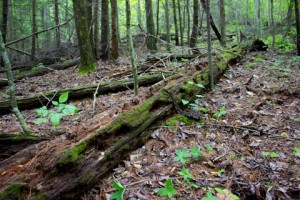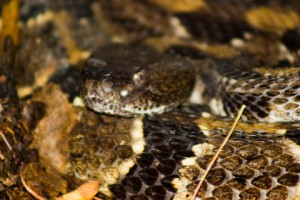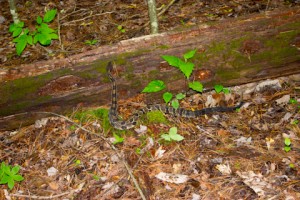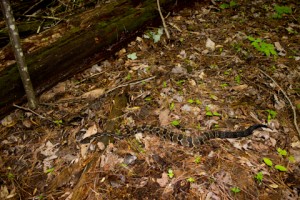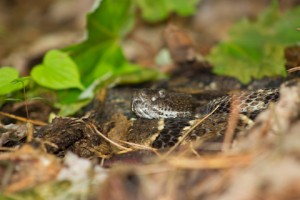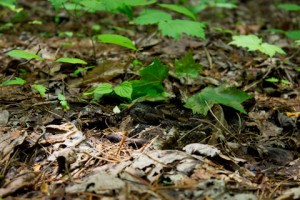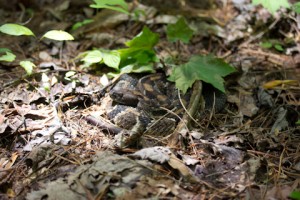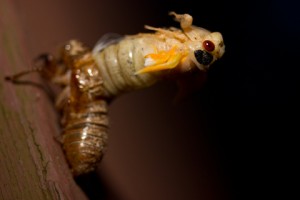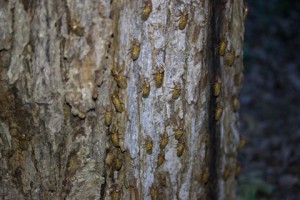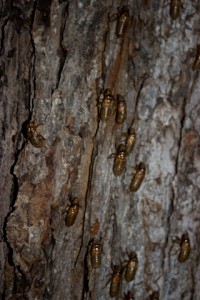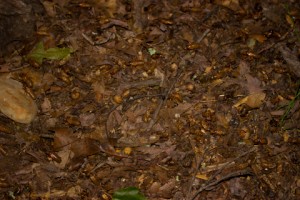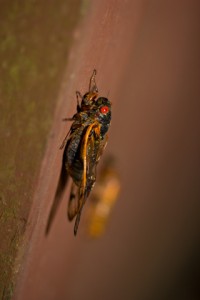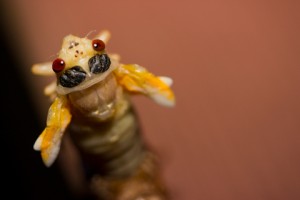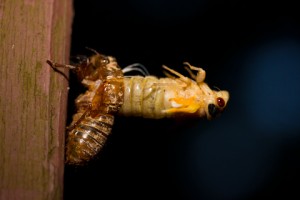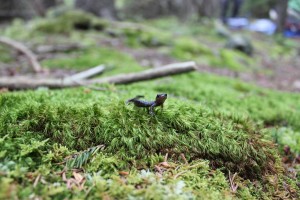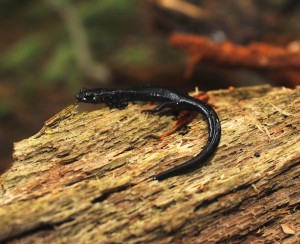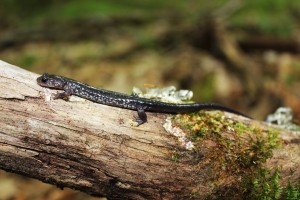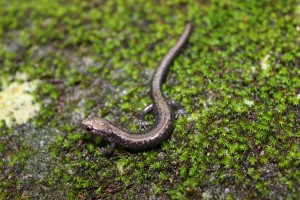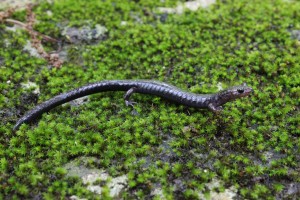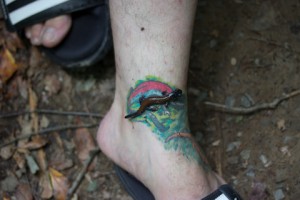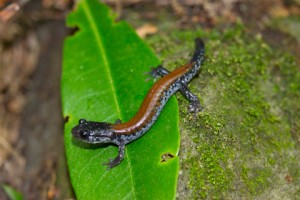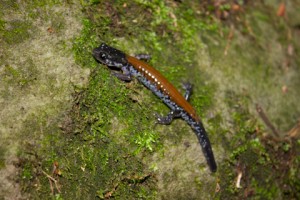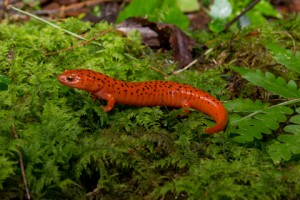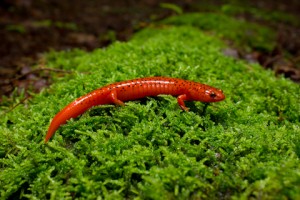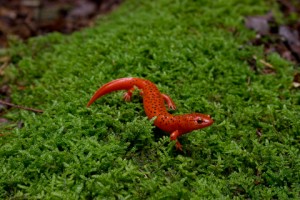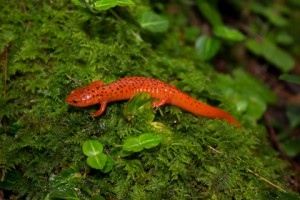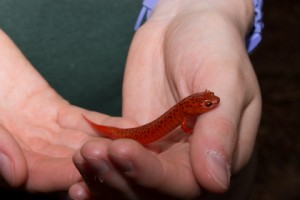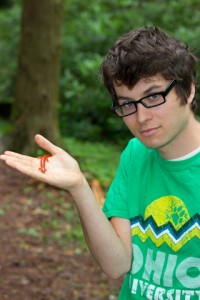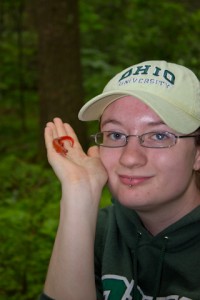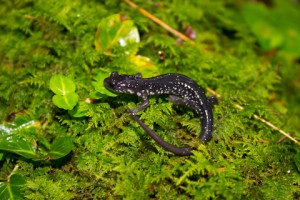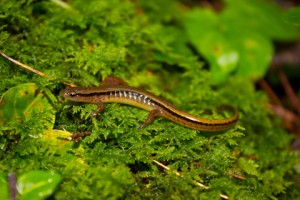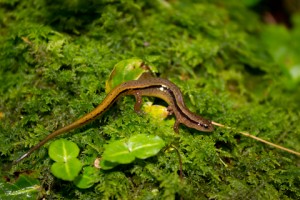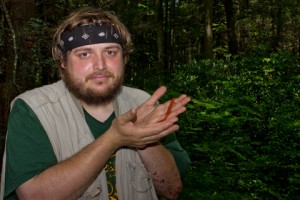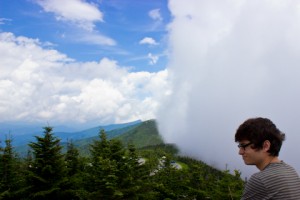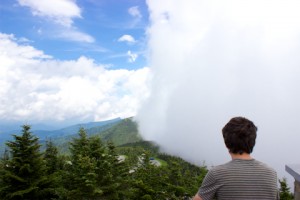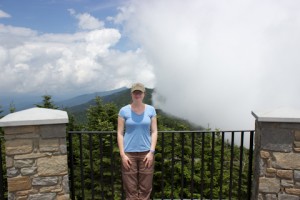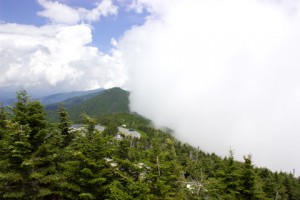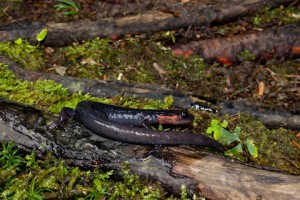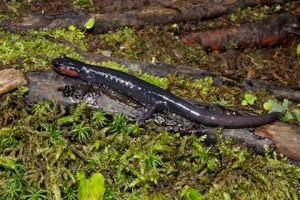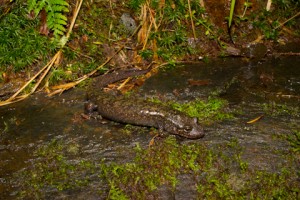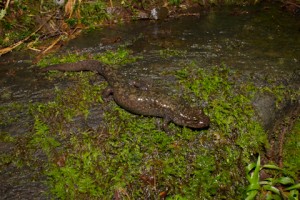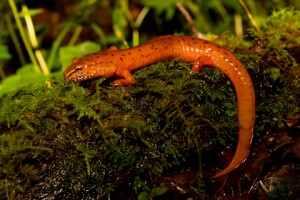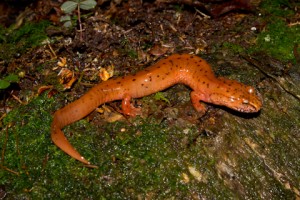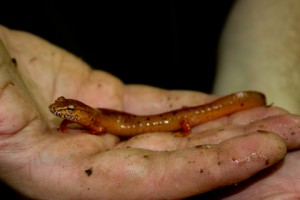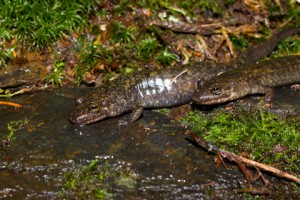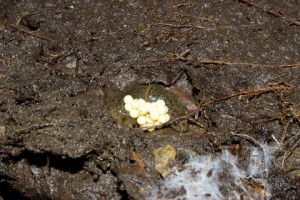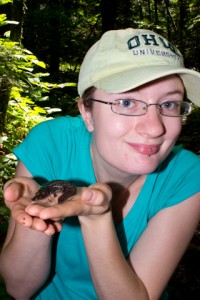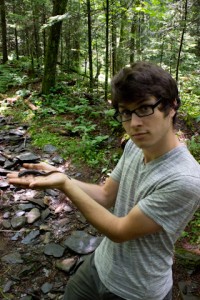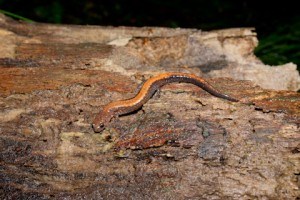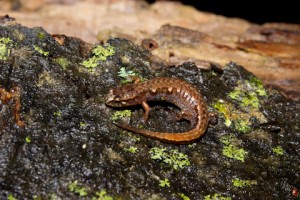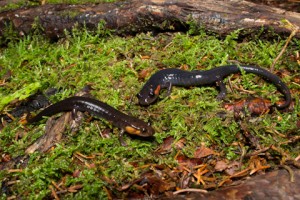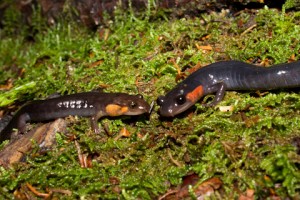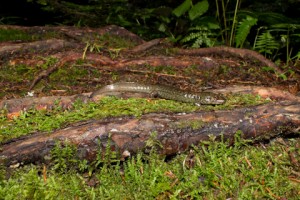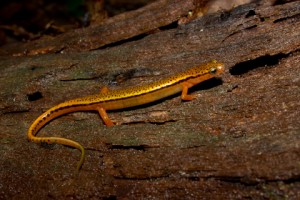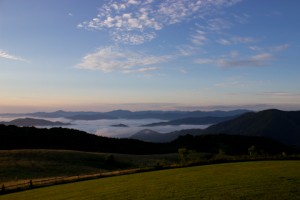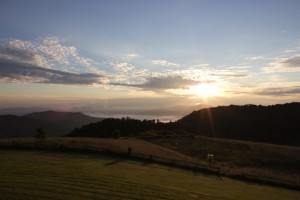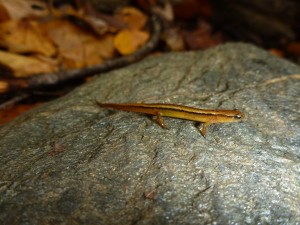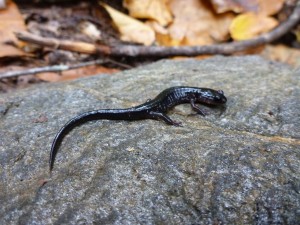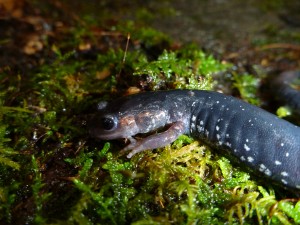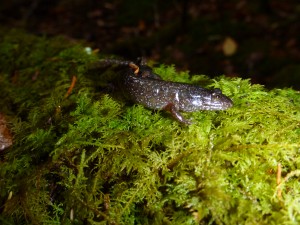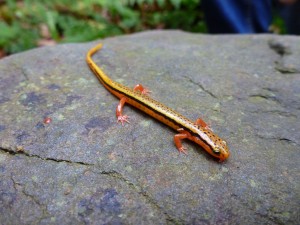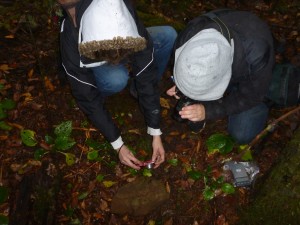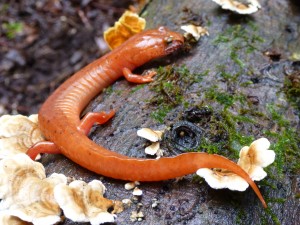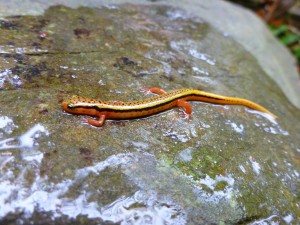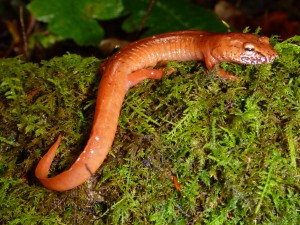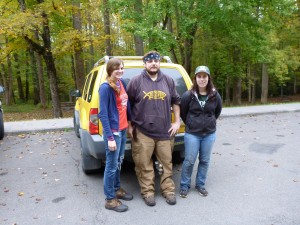Better Late Than Never
Well I am finally getting around to posting about my summer field work. I am going to post most of the photos here but the bulk of them can be found all in one place on my websites photo page.
I am going to quickly sum up my experiences as the summer progressed and include a few of the more memorable stories. However, since it is 2 months of work, going into detail for the entire time I would need 50 pages and no one wants that. Before we headed south I did some field work in Wayne National Forest, which produced some cool finds including a Spotted Salamander (Ambystoma maculatum) and an Eastern Box Turtle (Terrapene carolinensis).
This field season started for me on May 8th and finished up on July 15th. The original plan was to come back down to field sites later in the summer, however given my funding situation and the late summer heat, it proved to be a better decision to safe my money and wait until next year. From Fall 2013 to Spring 2014 I have the Graduate College Named Fellowship, I will then have the OCEES fellowship in the Spring of 2015. Basically, this means I do not need to teach during this time which will provide me with much more time to finish my research. So ideally I will be able to collect substantial amount of data the next two springs.
As for this past field season, Celeste Wheeler and William Ternes joined me to help with the research. We were crammed into the car with all our gear (pictured above). The season had a rather shaky start. The first sites we visited were down near the Elkmont Campground on the Tennessee side of the Great Smoky Mountains National Park. To our surprise, the salamanders were nearly impossible to find at these locations. We spent nearly a week search at several field sites in the area and only turned up a few Desmognathus species and a couple Plethodons at a couple of the sites. Overall, this was pretty disappointing given how easy it is to find salamanders in other areas of the Smokys. We did see some other cool wildlife including a worm snake.
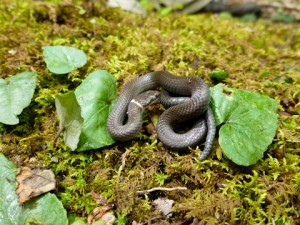
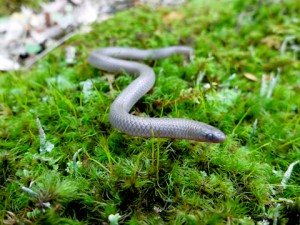
We moved north in hopes of finding some better sites. One site near Cosby Campground near the northwest edge of the Smokys was very productive, as it has been in the past. This was a nice change and helped boost our spirits. We found several species of Plethodon here and a few other cool species.
We continued our trip north and once again found field sites that were very short on salamanders. This left me thinking three things, 1) they were never here, despite what look like good conditions, something about the habitat or location prevents salamanders from existing in high numbers, 2) they were here but disease or changing climate/habitat has pushed them out, or 3) it was the wrong time of year to find them. I am hoping for some of the sites it is merely number 3 which I can test out this Spring when I am on fellowship and can therefore get down to my lower elevation sites much earlier.
One fun part of this summers work was getting to stay at a bunch of new campsites. One of which was right on the Nolichucky River which made for a very soothing nights sleep.
This less productive part of the trip was focusing on low elevation sites primarily in Tennessee and North Carolina. However, as we made our way north things started to improve. The first really successful area was the field sites near Sherando Lake in Virginia. This area also contains Plethodon sherando (still in the process of sorting these photos so none are pictured) which is endemic to the region only existing in Big Levels (their common name is Big Levels Salamander). The field sites in this region were very productive so we not only found a large number of salamander species, but also some other amazing wildlife.
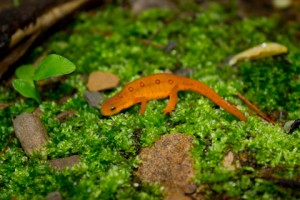
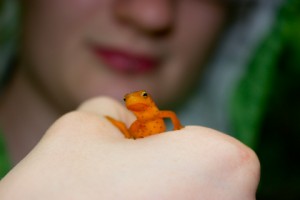
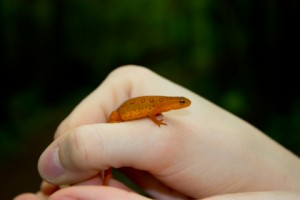
Probably the coolest find of the trip came on a trail off of the Blue Ridge Parkway. We found several red-efts out walking around as we started down the trail. Eventually, we found a Plethodontid salamander and began establishing the presence and absence plots so we could record micohabitat data. AFTER we had setup both plots and began collecting data, Celeste was walking between the two plots and noticed a snake. She seem startled, but I assumed it was just another black rat snake or other common (and harmless snake). However, when I looked over I immediately noticed it was not some common snake we had seen several times before, but it was instead a perfectly coiled Timber Rattlesnake, Crotalus horridus! I was very excited because I have rarely been able to see the east coast rattlesnakes, in fact this was only the second time I had seen a Timber Rattlesnake in the wild. We tried to gather the rest of our data as quickly as possible before taking a few photos of the beautiful snake. The snake never rattled, moved quickly, or acted aggressive the entire 40 minute we were in the area. Overall, it was a great experience, and helped make Celeste and Will realize that snakes have excellent camouflage so they needed to be on the look out.
From Sherando we moved to the Camp Roosevelt Campground which was the northern most part of George Washington/Jefferson National Forest that I was using for my research. We found some salamanders at these field sites, but the most exciting part of this leg of the trip was the emergence of the cicadas. We saw (and heard) thousands of cicadas emerge from the ground at our campsite. Having never seen this before, it was quite the treat,
After Camp Roosevelt we moved to West Virginia and my first visit to Monongahela National Forest. This was my first trip to this forest so I was pretty excited, however, we immediately ran into some major technological issues. One, West Virginia has very limited cell phone service from what I am use to, and the campsite I chose was a good hour away from any sort of cell reception. Of course as soon as we got to the campsite I had electronic issues in my car including a blown fuse. I was able to change the fuse and get us running again, but that would not last. We ended up needing to get a hotel for the night and spend 2 days getting the car fixed which was much more problematic given I had no cell service. Ultimately the issue was fixed and we got to start field work but it was certainly a stressful time. Fortunately, Monongahela National Forest was awesome and outside of a few field sites, was very productive. These sites included some great finds like P. nettingi and P. wehrlei. We spent a grad total of 2 weeks in West Virginia before heading back down to Virginia.
The first stop in Virginia was back at the Sherando sites, however by this time, things had warmed up and it was no where near as productive as the firs stop. Ultimately I will need to head back down specifically to do some microhabitat work on P. sherando. However, the second stop on our return trip to Virginia was Peaks of Otter, which has the very amazing Peaks of Otter Salamander, P. hubrichti. This is another species that exists in a very restricted area, but it very locally abundant. As well as finding cool salamander here, we also saw a Bared Owl along the side of the Blue Ridge Parkway, followed shortly after by a bobcat with a kill (or roadkill) in it’s mouth. That was the first bobcat I had seen since I was in Florida, so I was pretty excited.
The stop at Peaks of Otter lasted around a week and included several days where we got soaking wet with some of the biggest downpours we had to deal with this summer, but salamanders loved it, so I can’t complain.
We had another stop in Virginia near the Mountain Lake Biological Station where I was able to say hi to Caitlin Gabor and Andrea Aspbury who were both assisting with one of the REU programs there.
Will, Celeste, and myself finally made it back down to the Tennessee and North Carolina area were we bounced further south stopping at sites a long the way. There was some more great scenery especially once we reached the Smoky Mountains again. One cool salamander species that I was really hoping we would find was Plethodon yonahlossee. Luckily we managed to find two of them, including one at a new site which means I will hopefully be able to get more data on them over the next two years.
We managed to stop in Asheville, NC for a two day break from field work. It was certainly nice to get our clothes cleaned and sleep in a bed especially after nearly two months of sleeping in a tent.
Our last two stops were probably the most memorable locations. The second to last was at Carolina Hemlocks Recreation Area. The campground is one of the best in North Carolina and is situated on the South Toe River. I had high hopes for this location, because it was near several great field sites and the river supposedly contains Hellbenders (Cryptobranchus alleganiensis). We manged to collect some good data, but we also had to endure nearly 7 straight days of rain. Our tents leaked, everything got wet, and the previously calm and clear river became raging and murky, so we were pretty miserable by the time we left. However, like most places we visited, there were upsides. At a nearby site Celeste also managed to find another gorgeous salamander, a Red Salamander (Pseudotriton ruber) which was in a plot with two other genera of salamanders a Plethodon and a Eurycea. We also visited Mount Mitchell, the highest point east of the Mississippi.
Luckily, the last leg of our trip was spent at Purchase Knob. This research station is set on the eastern border of the Great Smoky Mountains National Park. Purchase Knob was donated in 2000 by Kathryn McNeil and Voit Gilmore. Purchase Knob was built as a summer home, so it provides a very comfortable place for researchers to stay especially for ones who have come from less desirable conditions (like tents in the middle of a 7 day downpour). Our time as Purchase Knob was productive and also provided some additional cool wildlife sightings. However, compared to last summer we saw very few bear and elk. Despite being out over a month longer than last summer we saw only one bear and two elk the entire trip compared to 6+ bears and 40+ elk last year.
Overall it was a fantastic trip, I regret not updating this blog more during the summer as I would have been able to add more detail. Hopefully, I can keep up next summer as I should have better access to electricity.
I close once again with some of the nice views around Purchase Knob.

